A week ago, the St. Louis area made the national news for the prodigious amount of rain we had in a 24-hour period. We weren’t really excited about breaking the 24-hour rainfall record by over 2 inches, but it happened. State and federal disaster aid is available to flood victims.
River floods are a result of heavy rain or rapidly melting snow upstream and affect areas along the riverbanks. Rainfall events are different: the rain falls faster than the ground and drainage systems can handle it, forcing it to accumulate in any low-lying area at the bottom of any hill. Unfortunately, we had three heavy rainfalls over short periods of time in fewer than seven days, severely affecting many homes and businesses. The owner of one business said his ground floor was covered by water three times in a week. Countless cars were completely submerged by flood waters. Because of the power of the moving water, rescue teams had to exchange smaller boats for larger ones.
Our rain gauge overflows at 5 inches, but the official reading for our area was 12 inches. Ted and I looked at the TV meteorologist’s map showing contour lines representing rainfall totals on a map of the metro area. We estimated that we fell in the 9-10 inch range. The following two rain events brought lesser amounts–around 2-3 inches each time, according to our rain gauge. After the St. Louis “practice session,” the storms moved into Kentucky and that state had far more flood damage than we did. Ted and I were fortunate. We had nothing worse than a very soggy lawn.
A few days after the last rainfall, Ted and I decided the Katy Trail was probably dry enough to bike. We headed for the Greens Bottom trail head and planned to bike westward to Weldon Spring–about 11 miles one way. We hadn’t thought about the fact that the rail trail on which the Katy is built runs along the Missouri River (low ground) and that it might have flooded, so we were surprised when we entered the trail and saw a sign announcing it was closed for flood damage repair.
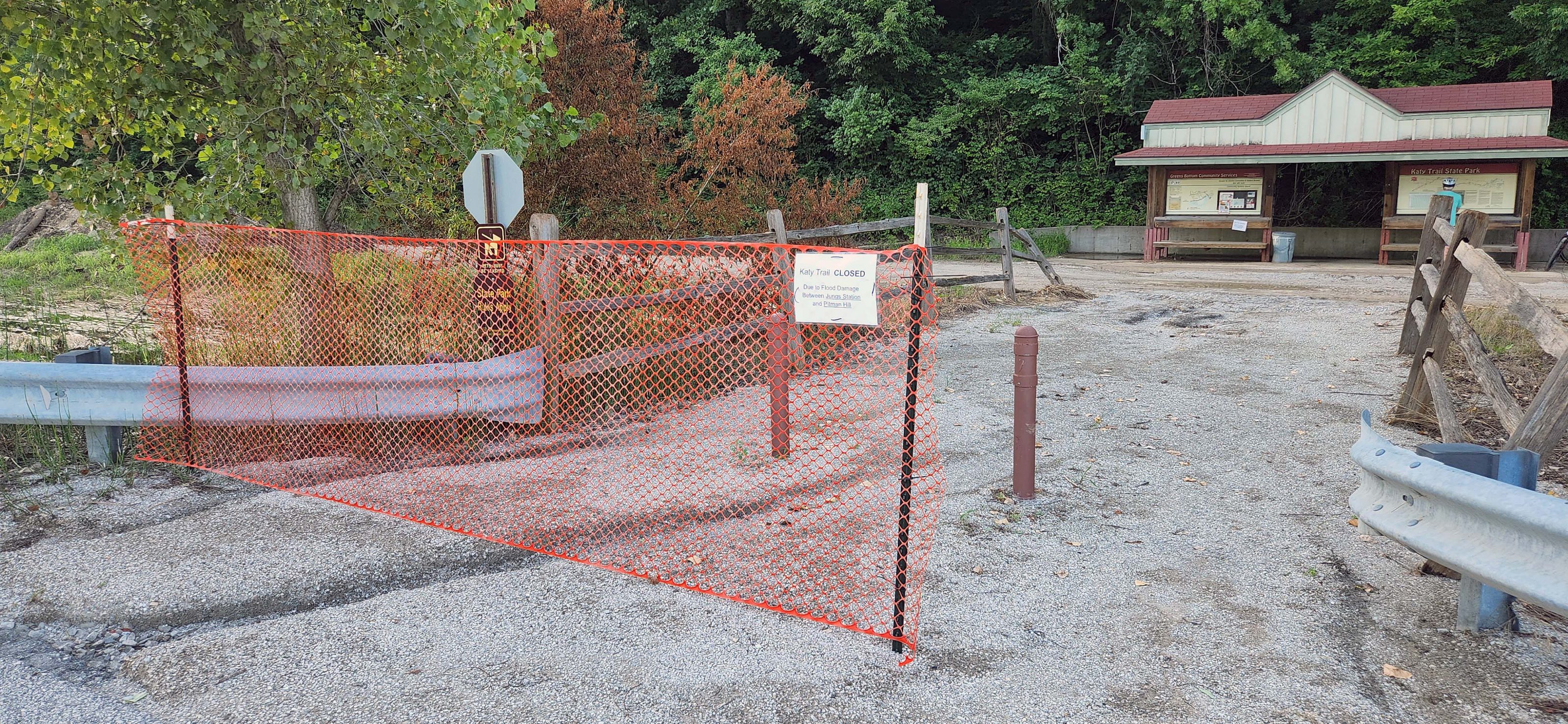
The trail looked ok and there was plenty of room to bike past the warning fence, so we decided to try it. If it was washed out or blocked, we could always turn around. The first 2 miles were rough, but the trail rises gently in elevation from its eastern to its western terminus, so all was well after the first two miles.
The trail was badly rutted in several places. Obviously, the water was running from the trail into the creek.
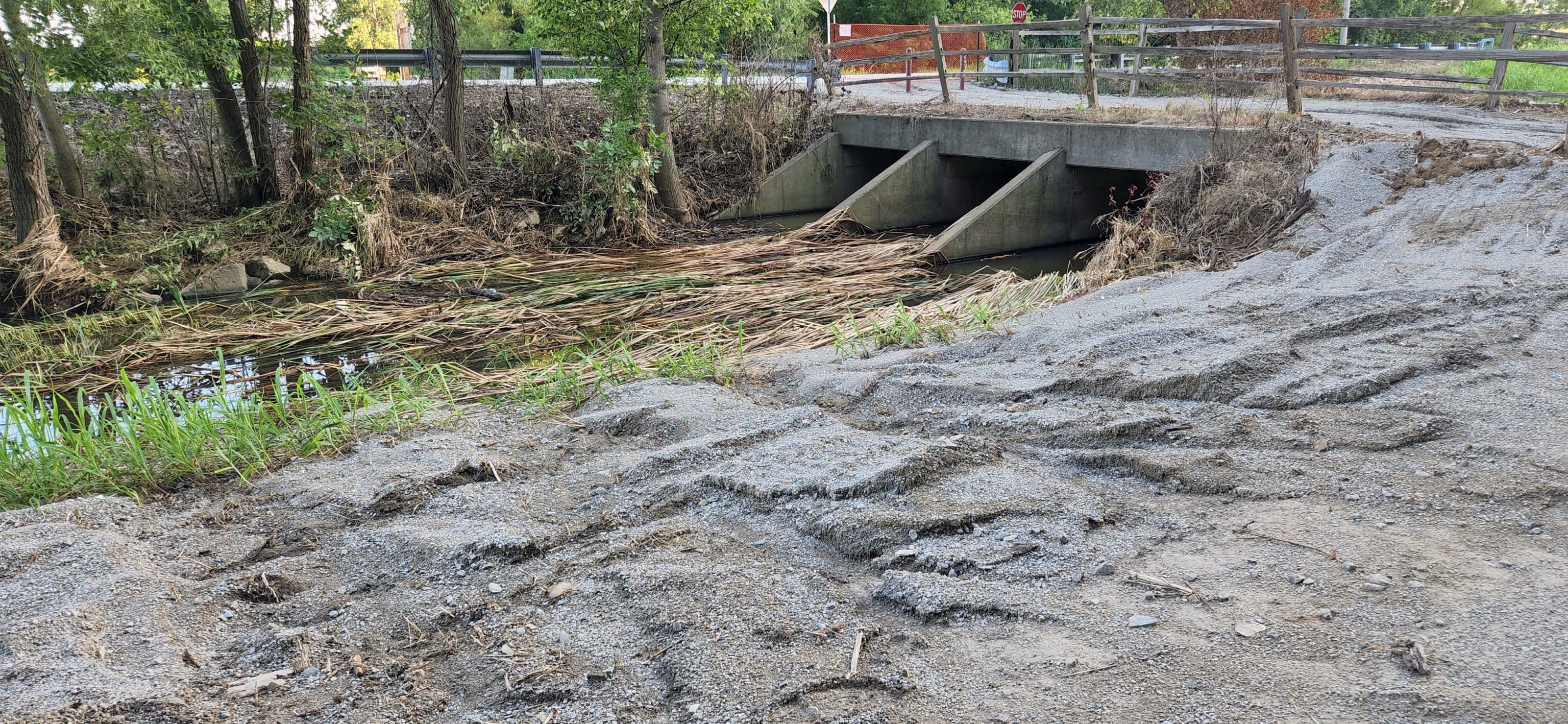
There was a lot of accumulated debris on the upstream side of this bridge. The grader is ready to go.
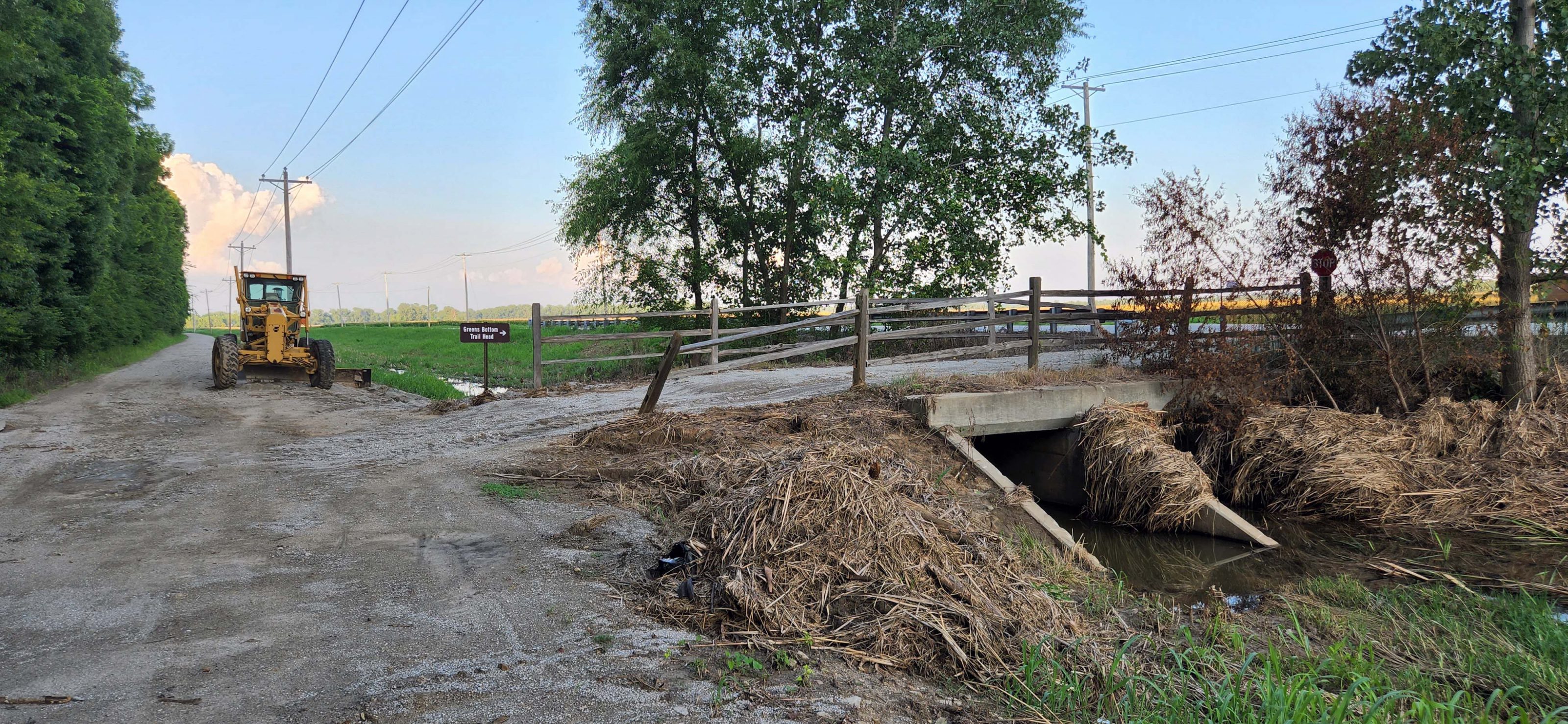
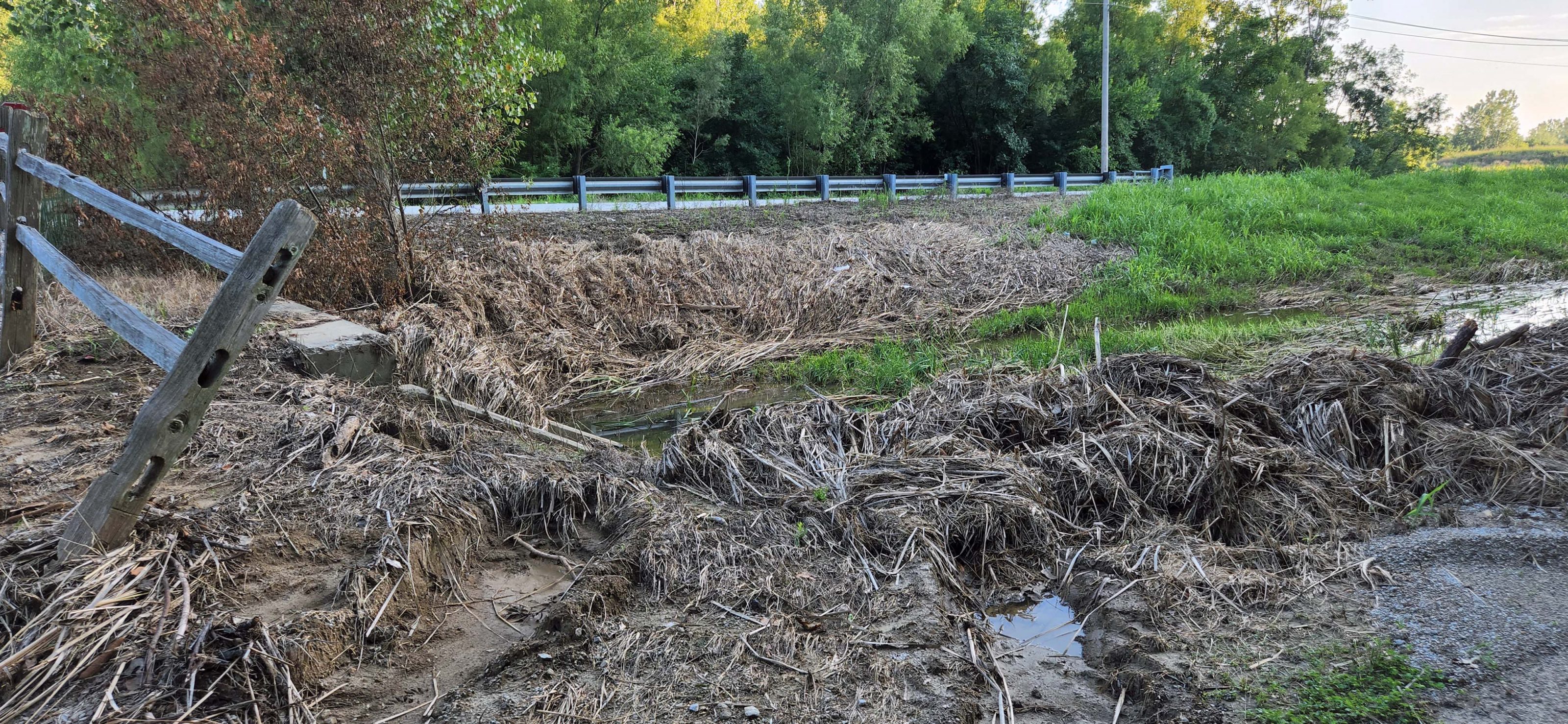
Our first street crossing required dismounting and walking our bikes across. The ruts were 4-6 inches deep all the way across the trail.
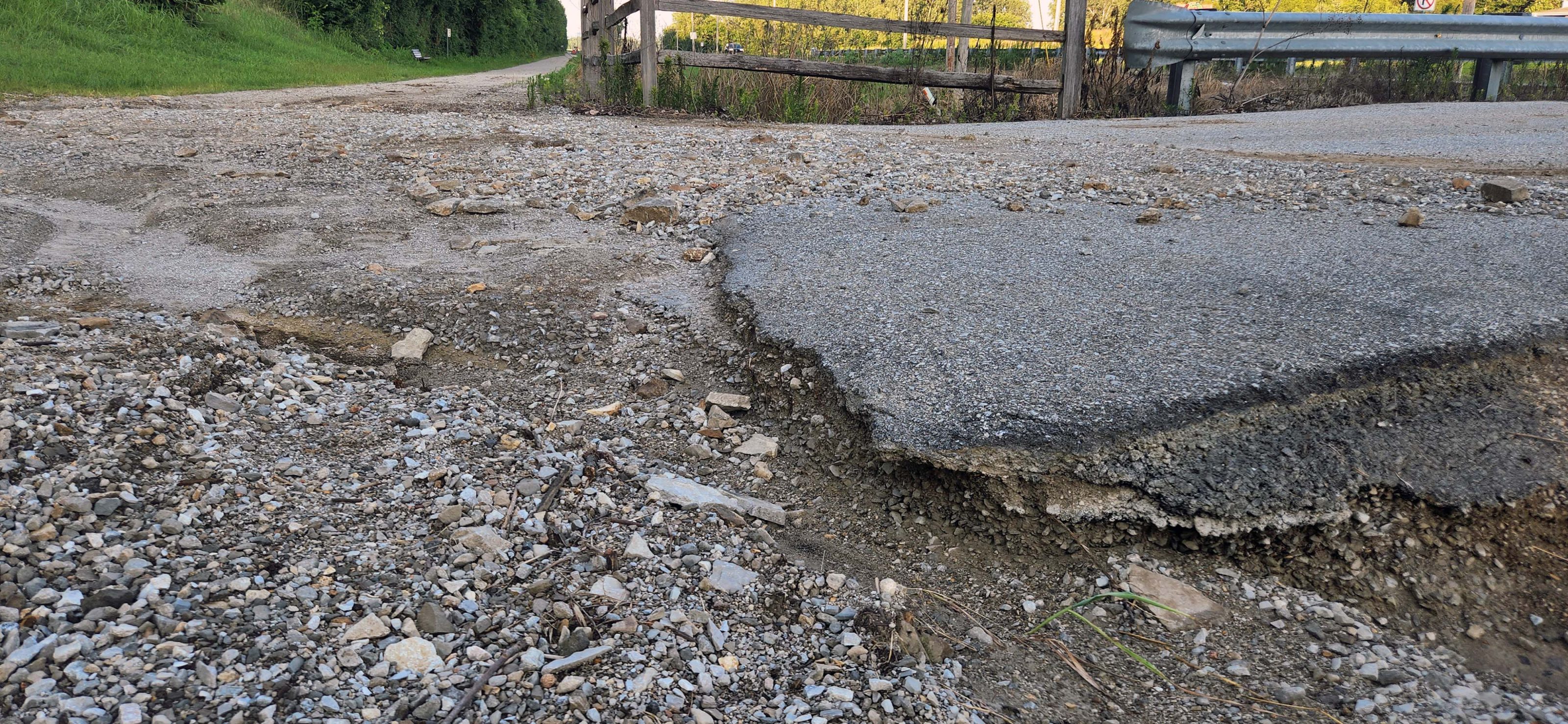
This might have been a huge source of water runoff. The Katy runs along a limestone river bluff at Greens Bottom. The standing water at the bottom of this point of the rock wall led Ted and me to think that the rainfall from the top of the bluff tumbled down these rocks like a giant waterfall, then ran over the trail.

Our assumption about the water running down this bluff was supported by the piles of silt the bobcat piled up when workers cleared the trail. The arrow points to the base of the “waterfall” point in the above photo.
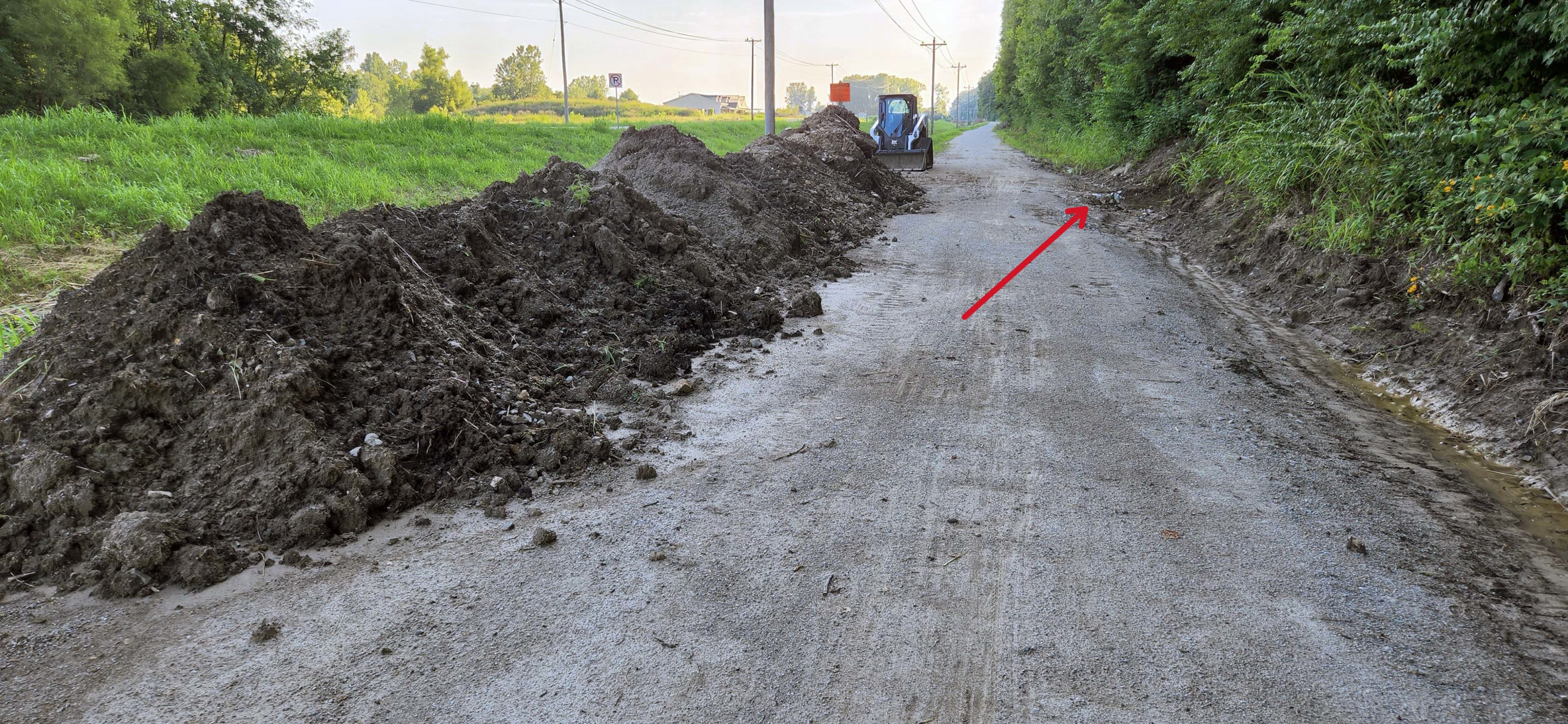
As we biked westward, we noticed a lot of trees that had been washed out by the heavy rain and the powerful flood waters. The Park Service has already been hard at work clearing the trail.
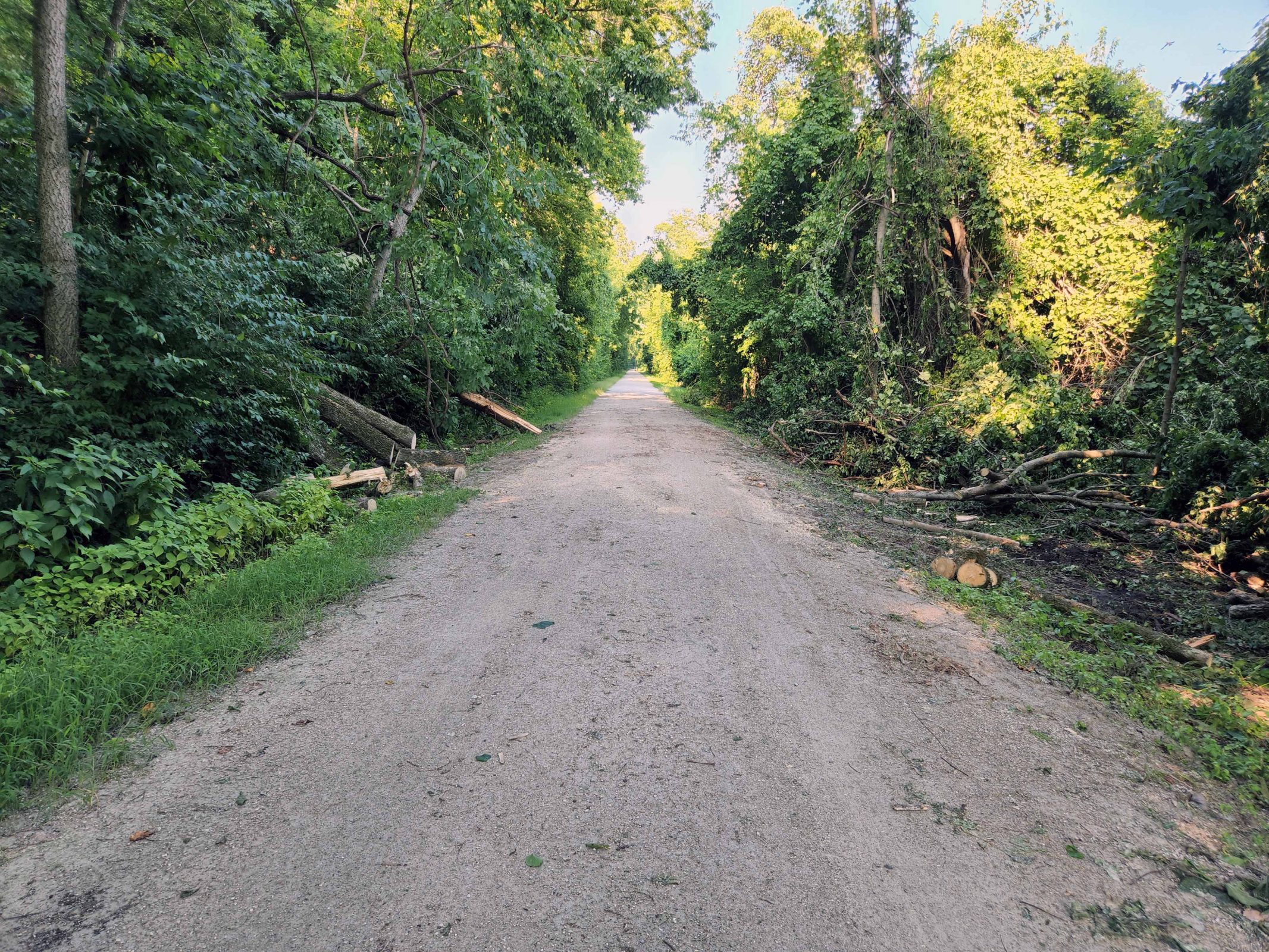
Along the way, we saw a volleyball that apparently floated away from its home and became stuck on a fencepost. Given its beat-up condition and the brand name facing us, we couldn’t help thinking “Castaway” and “Tom Hanks.”
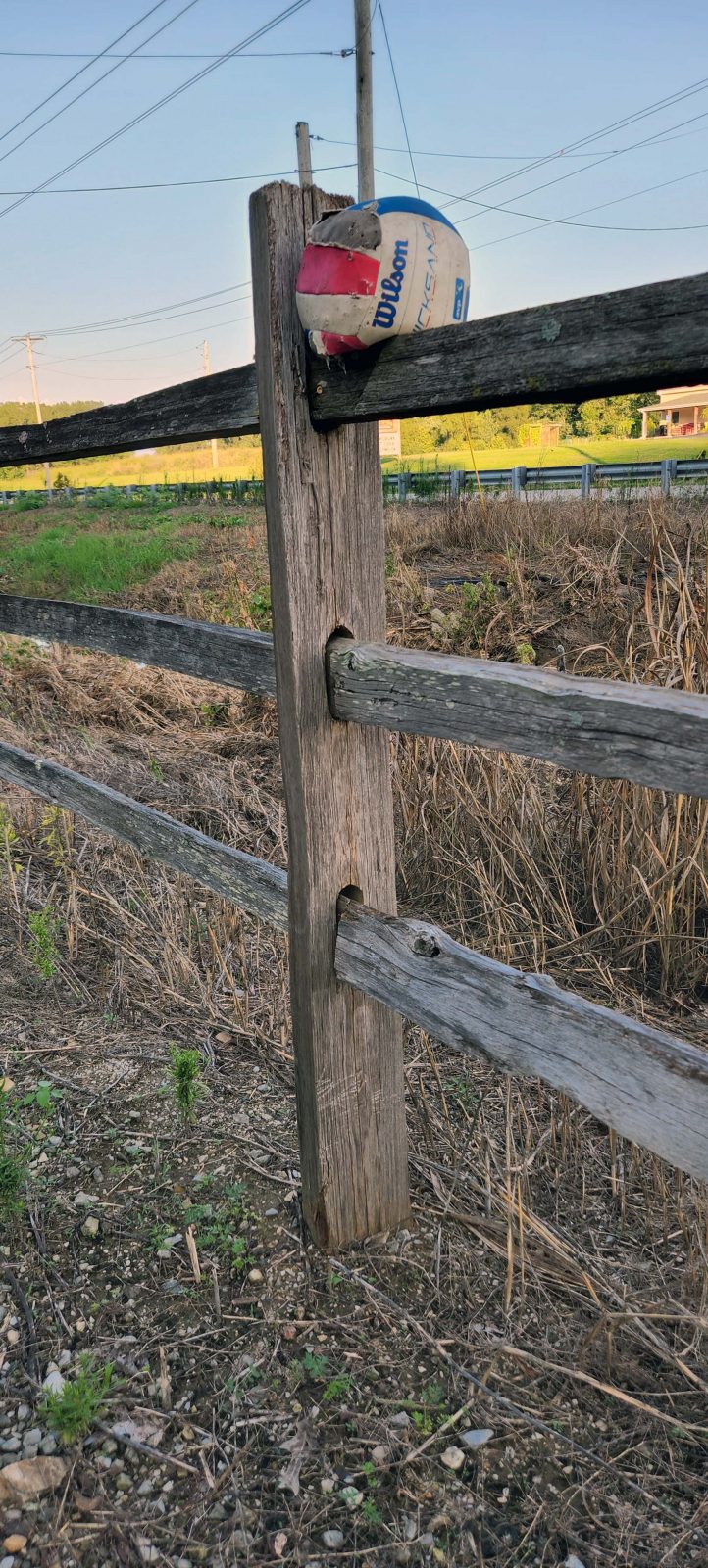
We had to slow our biking speed for the first two miles in order to navigate around the ruts in the road, but the rest of our ride was smooth. It was another good 22-mile ride on the Katy with a flood adventure for added interest.